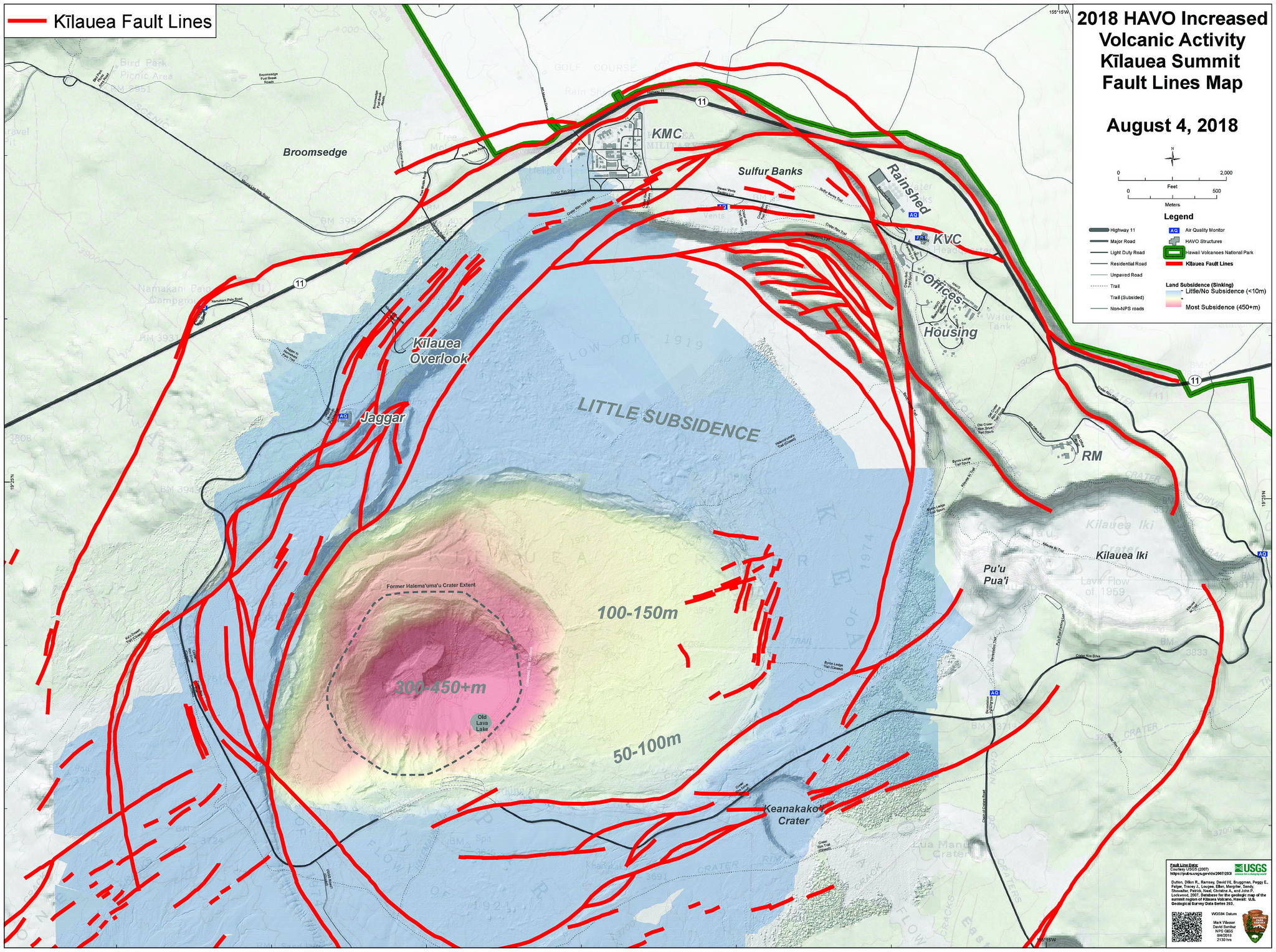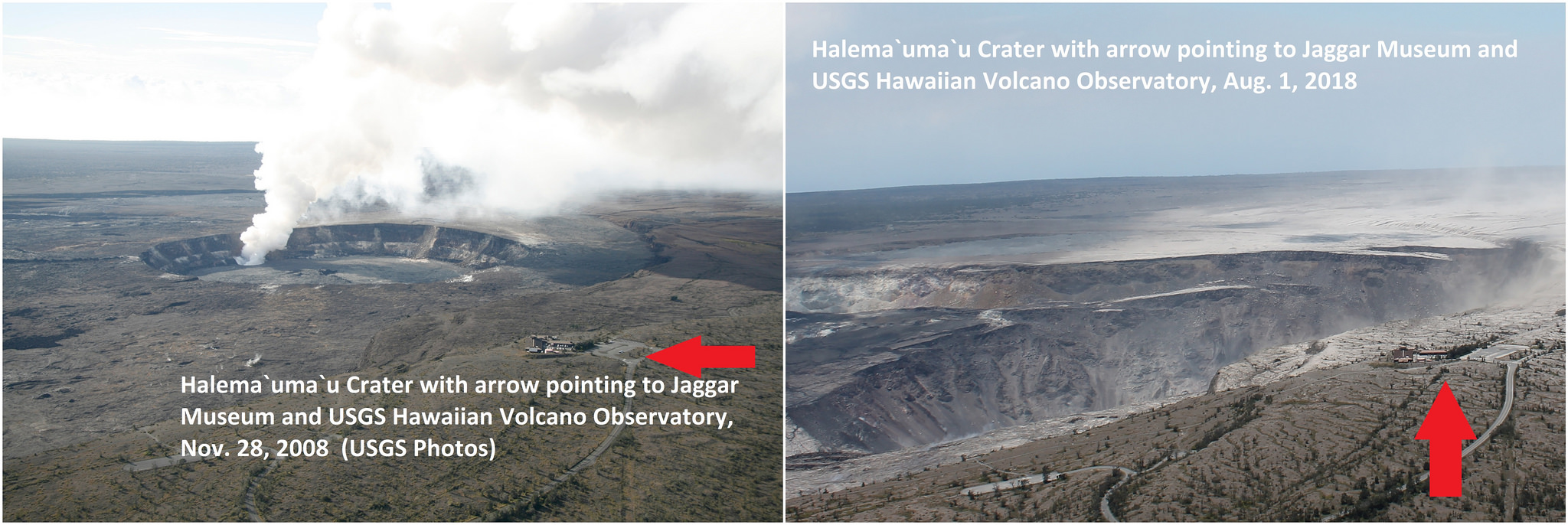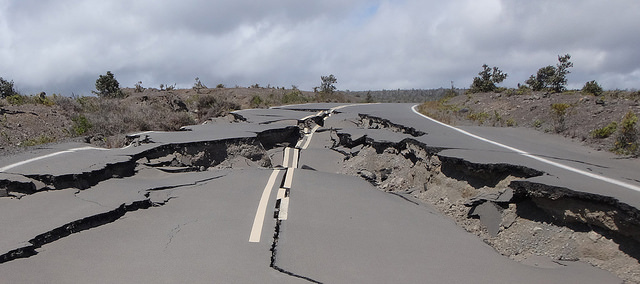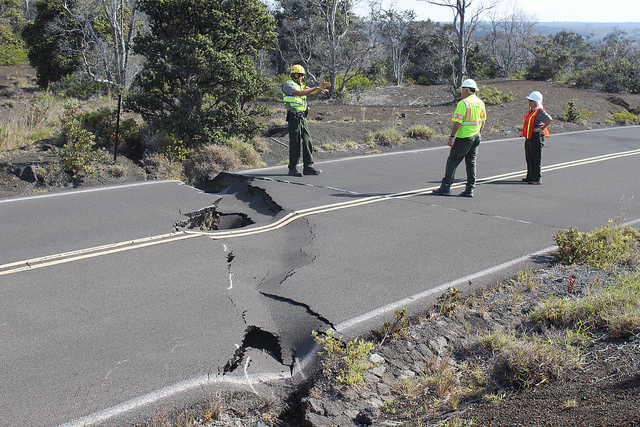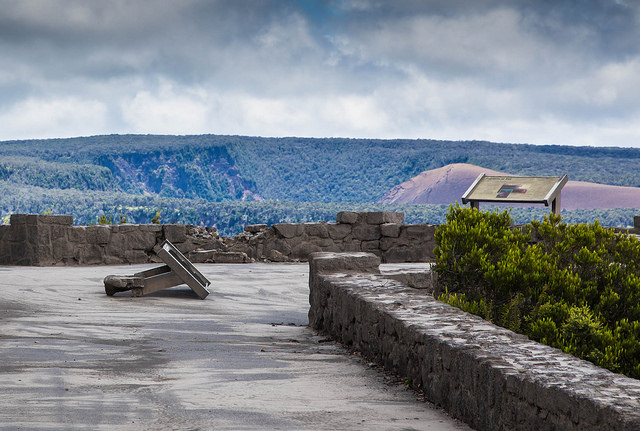Safety Is Key to Volcanoes Park Reopening
As Hawai‘i Volcanoes National Park prepares to reopen its gates, park officials want to ensure that the public and NVNP staff are as safe as possible.
Many hazards exist in the park, as they always have; however, some are more dangerous now than before the unprecedented seismic activity. Being prepared and informed before coming to the park will ensure that your visit is safe and enjoyable.
For your safety, use only open trails and roads. Closed trails and roads are dangerous, do not enter. Puka, holes or cracks in the ground, are prevalent throughout the park but are often hidden under vegetation or ash. These unstable and dangerous features can collapse at any time and may have fragile edges or be undercut. If possible, hike and travel with at least one other person and let someone know where you plan to visit.
Photos: July 24–Aug. 17, 2018. PC: Hawai‘i Volcanoes National Park
Stay away from cliff edges and be aware of rockfalls that may occur as the land continues to settle after tens of thousands of recent earthquakes and caldera collapses.
Volcanic ash is now present in many areas, especially the Ka‘ū Desert, where whirlwinds of ash are observed swirling across the landscape every day. It is highly recommended that visitors carry protective eyewear and an N-95 particulate mask for hiking the Footprints Trail into the Ka‘ū Desert. Conditions may suddenly become hazardous during high wind events and particulates in the air can cause eye and lung irritation. Pele’s Hair, fine threads of volcanic glass, is present in many areas and can be extremely abrasive and harmful to respiratory systems and exposed skin.
Wear sturdy shoes and long pants. Falling on lava rock is like falling on broken glass. There is very little shade in lava fields around the park and temperatures may be much higher than surrounding areas. Wear sunscreen, a hat, and sunglasses. The park’s water remains unsafe to drink. All visitors should bring at least two quarts or more of drinking water per person.
Do not hike after dark due to new hazards in the area. Even those who are familiar with the park should be cautious while hiking because of these hazards.
Although sulfur dioxide is at the lowest recorded levels since 2007, air quality may change at any time. If the air irritates your lungs, smells bad, or you have difficulty breathing leave the area immediately. The Kīlauea Visitor Center offers updates on air quality, as does the park air quality monitoring website.
Help keep National Park Service staff safe. When unauthorized persons enter closed areas, they are not only endangering themselves, but also the NPS rangers who may have to rescue them. Monetary fines for entering a closed area are steep and trespassers may also receive up to six months of jail time.
Molten lava is no longer present or visible anywhere in the park. The recent eruption saw the disappearance of the lava lake inside Halema‘uma‘u crater at the summit and lava flows from Pu‘u ‘Ō‘ō have ceased.
Inspections of park infrastructure continue. National Park Service assessment teams have now inspected 54 buildings and restored non-potable water to 12 buildings. Twenty-nine miles of trail have also been evaluated. At this time, there is no drinking water available in the park. Plan accordingly before your arrival at Hawai‘i Volcanoes, as services may be extremely limited.
For more information, visit the park’s website.





